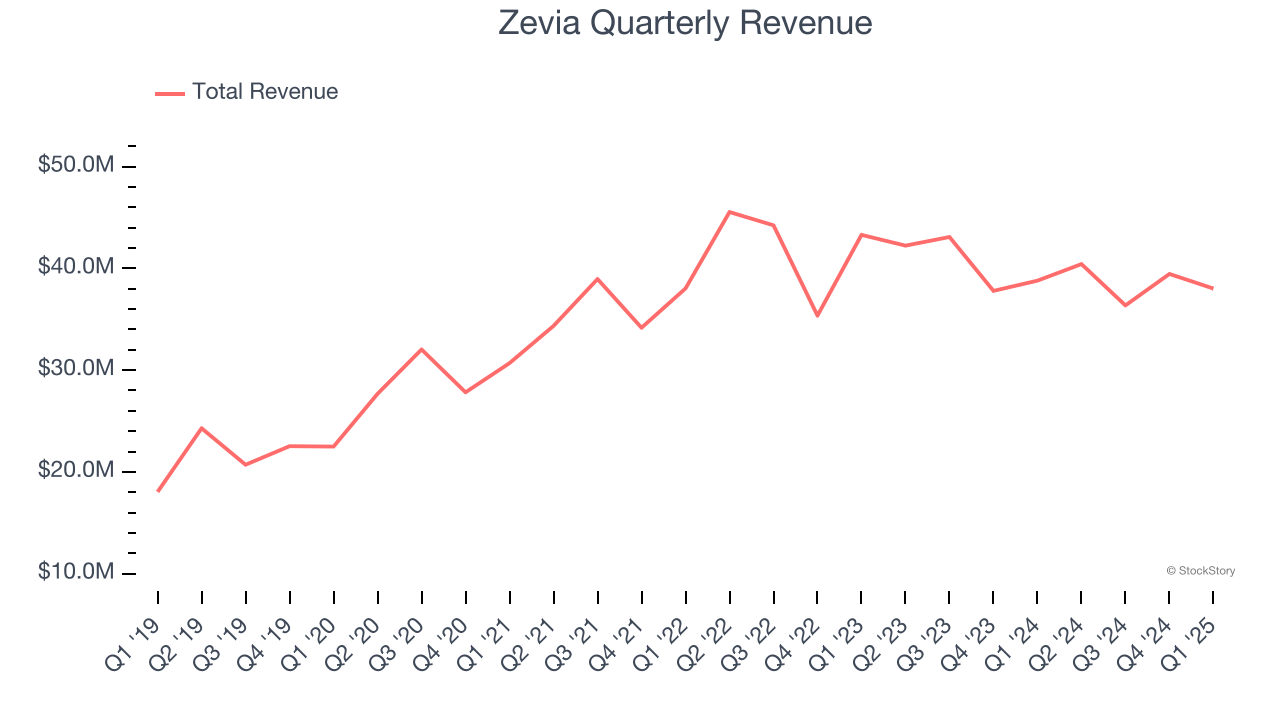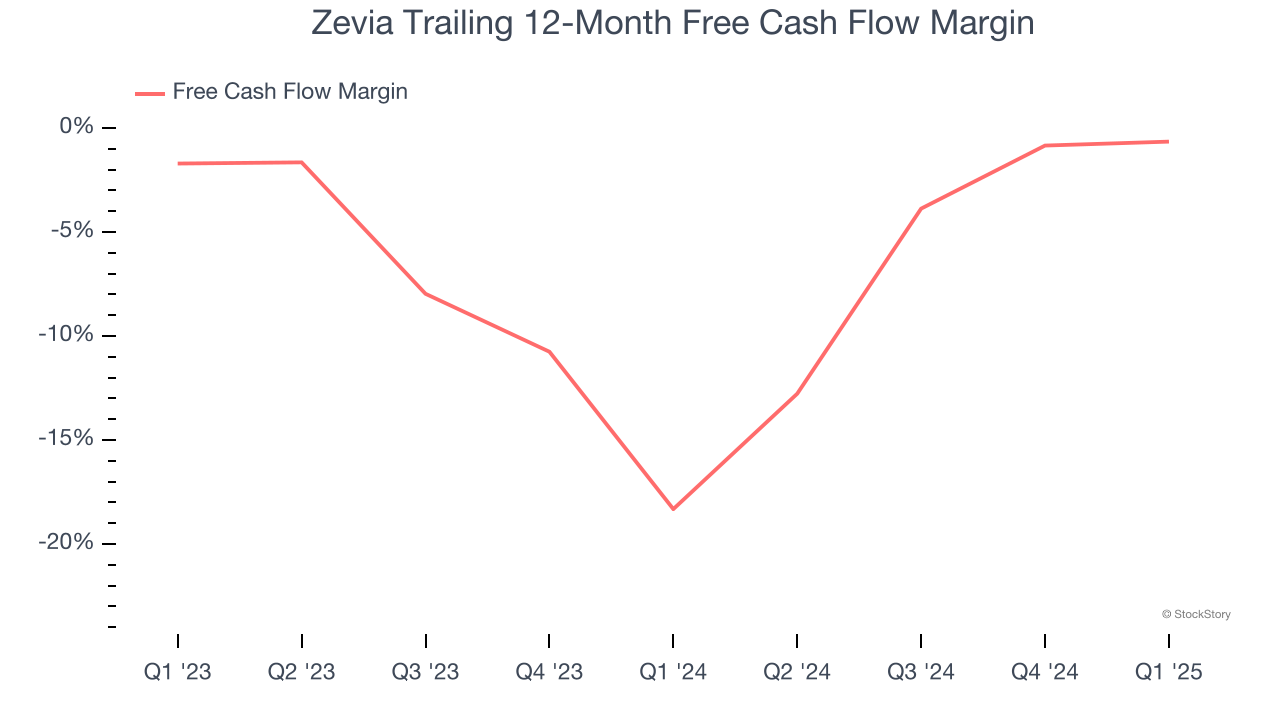
Over the last six months, Zevia’s shares have sunk to $2.64, producing a disappointing 17.5% loss while the S&P 500 was flat. This may have investors wondering how to approach the situation.
Is now the time to buy Zevia, or should you be careful about including it in your portfolio? Get the full stock story straight from our expert analysts, it’s free.
Why Is Zevia Not Exciting?
Even with the cheaper entry price, we don't have much confidence in Zevia. Here are three reasons why we avoid ZVIA and a stock we'd rather own.
1. Long-Term Revenue Growth Disappoints
A company’s long-term sales performance is one signal of its overall quality. Any business can put up a good quarter or two, but many enduring ones grow for years. Regrettably, Zevia’s sales grew at a sluggish 2% compounded annual growth rate over the last three years. This was below our standards. 
2. EPS Trending Down
We track the change in earnings per share (EPS) because it highlights whether a company’s growth is profitable.
Zevia’s earnings losses deepened over the last three years as its EPS dropped 27.1% annually. We tend to steer our readers away from companies with falling EPS, where diminishing earnings could imply changing secular trends and preferences. If the tide turns unexpectedly, Zevia’s low margin of safety could leave its stock price susceptible to large downswings.

3. Cash Burn Ignites Concerns
Free cash flow isn't a prominently featured metric in company financials and earnings releases, but we think it's telling because it accounts for all operating and capital expenses, making it tough to manipulate. Cash is king.
Zevia’s demanding reinvestments have drained its resources over the last two years, putting it in a pinch and limiting its ability to return capital to investors. Its free cash flow margin averaged negative 9.7%, meaning it lit $9.70 of cash on fire for every $100 in revenue.

Final Judgment
Zevia isn’t a terrible business, but it isn’t one of our picks. Following the recent decline, the stock trades at $2.64 per share (or a forward price-to-sales ratio of 1.2×). The market typically values companies like Zevia based on their anticipated profits for the next 12 months, but it expects the business to lose money. We also think the upside isn’t great compared to the potential downside here - there are more exciting stocks to buy. We’d recommend looking at one of Charlie Munger’s all-time favorite businesses.
High-Quality Stocks for All Market Conditions
Donald Trump’s victory in the 2024 U.S. Presidential Election sent major indices to all-time highs, but stocks have retraced as investors debate the health of the economy and the potential impact of tariffs.
While this leaves much uncertainty around 2025, a few companies are poised for long-term gains regardless of the political or macroeconomic climate, like our Top 9 Market-Beating Stocks. This is a curated list of our High Quality stocks that have generated a market-beating return of 183% over the last five years (as of March 31st 2025).
Stocks that made our list in 2020 include now familiar names such as Nvidia (+1,545% between March 2020 and March 2025) as well as under-the-radar businesses like the once-small-cap company Exlservice (+354% five-year return). Find your next big winner with StockStory today.
